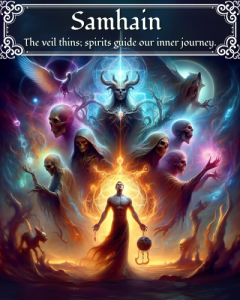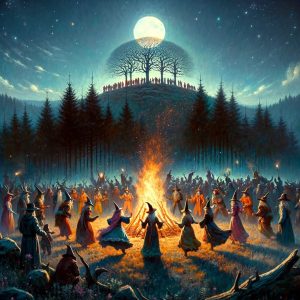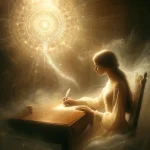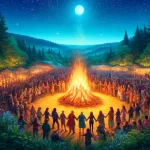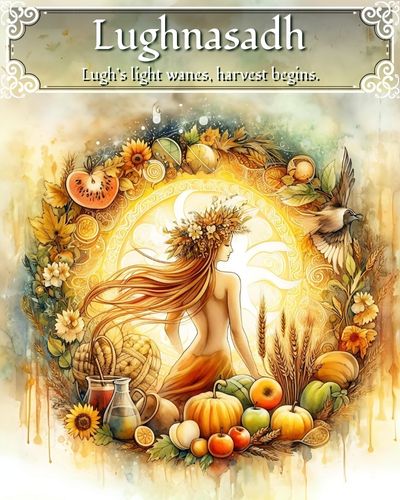
Approx. Reading time: About 10 Minutes

Introduction
Unveiling the Ancient Origins and Modern Traditions
Halloween, a holiday celebrated annually on October 31st, has gained widespread popularity as a day of spooky festivities, costumes, and treats. However, few are aware of the ancient Celtic festival known as Samhain, which forms the foundation of Halloween as we know it today. In this article, we will explore the rich history and origins of Halloween, its connection to Samhain, the evolution of modern Halloween traditions, and safety considerations to ensure a memorable yet safe celebration.

What is Halloween?
Halloween, known as All Hallows’ Eve, is a widely celebrated annual holiday that takes place on the evening of October 31st, preceding All Saints’ Day on November 1st. Originating from Christian traditions, Halloween has transformed into a vibrant and joyous occasion celebrated in numerous countries, particularly within Western cultures. Today, Halloween is synonymous with a plethora of festive customs, including costumes, jack-o’-lanterns, haunted houses, and the beloved tradition of trick-or-treating.
At its core, Halloween serves as a precursor to All Saints’ Day, which is a significant feast day in the Christian calendar commemorating the saints and martyrs. All Hallows’ Eve is observed as a time to prepare for this solemn occasion, but over time, it has also developed its own distinct character.
One of the most prominent features of Halloween is the opportunity for people of all ages to engage in playful self-expression through imaginative costumes. From witches and ghosts to superheroes and fictional characters, Halloween grants individuals the freedom to temporarily transform themselves into whoever they desire, blurring the lines between reality and fantasy.
Another iconic element of Halloween is the use of jack-o’-lanterns. Derived from an Irish folklore tale of Stingy Jack, these carved pumpkins with flickering candles inside serve as whimsical and eerie decorations. They are often crafted with expressive faces and placed on porches, doorsteps, and windowsills to symbolize the spirits of the departed and ward off malevolent entities.
Haunted houses, whether professionally organized or creatively decorated by enthusiasts, have become a cherished part of the Halloween experience. These temporary attractions immerse visitors in a world of fright and anticipation, offering an adrenaline rush through chilling encounters, eerie sounds, and spine-tingling surprises. Haunted houses capture the thrill and excitement associated with the supernatural and macabre, further enhancing the Halloween spirit.
Perhaps the most eagerly anticipated aspect of Halloween, especially for children, is the age-old tradition of trick-or-treating. Dressed in their imaginative costumes, young ones embark on an adventure from door to door, exclaiming “trick or treat!” in exchange for sweets and treats. This custom harkens back to the ancient Celtic belief that offering food to roaming spirits would protect homes from mischief and misfortune during the transition into winter.
Halloween has transcended its religious origins to become a universally celebrated occasion, filled with enchantment, creativity, and community spirit. The amalgamation of customs such as costumes, jack-o’-lanterns, haunted houses, and trick-or-treating has solidified Halloween’s place as a cherished holiday where individuals of all ages can indulge in the magic of imagination and embrace the thrill of the unknown.
History and Origin
To truly understand the origins of Halloween, we must delve into the ancient Celtic festival of Samhain. Celebrated by the Celts in Ireland, Scotland, and the Isle of Man, Samhain was a significant event that marked the end of the harvest season and the beginning of winter. It was a time when the agricultural community prepared for the long, dark months ahead.
In Celtic belief, Samhain held a profound spiritual significance. It was believed that during this transitional period, the boundary between the realms of the living and the dead became blurred, allowing spirits, fairies, and other supernatural beings to freely roam the earthly plane. The Celts viewed this interaction between the living and spirit realms as an opportunity to communicate with their ancestors and seek guidance for the future.
During Samhain, the Celts engaged in various rituals and practices to honor and appease these spirits. They lit immense bonfires, symbolizing the cleansing power of fire and the protective barrier it provided against malevolent entities. People would gather around these bonfires, offering sacrifices of crops and livestock to honor the spirits and seek their favor.
Costumes played a significant role during Samhain. The Celts would dress in animal skins and don eerie masks to mimic the spirits they believed were wandering among them. This practice aimed to confuse and ward off any harmful entities that may be lurking, while also serving as a form of sympathetic magic to ensure a bountiful harvest in the following year.
Divination and fortune-telling were also an integral part of Samhain. The Celts believed that on this night, the veil between the present and the future was thinnest, allowing them to gain insights into their destiny. Various methods of divination, such as apple bobbing or scrying into mirrors, were used to seek glimpses of what lay ahead.
With the spread of Christianity, Samhain gradually assimilated into Christian traditions. In the 8th century, Pope Gregory III designated November 1st as All Saints’ Day, or All Hallows’ Day, to honor saints and martyrs. The evening prior, Samhain became known as All Hallows’ Eve, later evolving into Halloween.
As the centuries passed, Halloween absorbed influences from various cultures and regions. The influx of Irish and Scottish immigrants to the United States during the 19th century brought with them their cherished Samhain traditions. Over time, these customs merged with other Halloween practices, resulting in the unique blend of festivities we celebrate today.
Halloween finds its roots in the ancient Celtic festival of Samhain, a time when the Celts recognized the end of the harvest season and believed that the boundaries between the living and spirit worlds became permeable. The rituals, bonfires, costumes, and divination practices of Samhain have evolved and intertwined with Christian traditions, shaping the modern Halloween we celebrate with joy and enthusiasm.
Connection to Samhain
The connection between Halloween and Samhain is deeply rooted in the ancient Celtic festival’s beliefs, practices, and customs. Samhain, derived from the Gaelic term meaning “summer’s end,” held immense significance for the Celts and serves as the foundation for many Halloween traditions observed today.
Central to both Samhain and Halloween is the concept of the spirit world intersecting with the realm of the living. The Celts believed that on the night of October 31st, as the season shifted from autumn to winter, the veil between these worlds grew thin, allowing the spirits of the dead to return to Earth. This belief formed the basis for the Halloween custom of spirits and supernatural beings wandering among the living.
To honor and appease these returning spirits, the Celts engaged in various practices during Samhain. One such practice was the lighting of bonfires. These grand fires served multiple purposes. Firstly, they provided warmth and protection against the encroaching winter darkness. Secondly, the bonfires were believed to have a cleansing effect, purging the land of evil spirits and negative energies. These bonfires were ancestors to the jack-o’-lanterns we see today, as carved pumpkins with candles inside were used to ward off malevolent entities during Samhain.
Costuming played a crucial role in both Samhain and Halloween. The Celts would dress in costumes made from animal skins, often wearing masks and disguises. These outfits served multiple purposes. Firstly, they helped the Celts to blend in with the wandering spirits, ensuring they were not targeted or harmed. Secondly, the costumes were intended to confuse and deceive any malevolent spirits, preventing them from recognizing or causing harm to individuals.
Offerings of food and drink were a central part of Samhain’s practices. The Celts believed that by providing sustenance to the spirits of the dead, they could honor their ancestors and seek their blessings for the coming year. This tradition finds resonance in the modern Halloween practice of trick-or-treating, where children go from door to door, asking for treats and sweets, symbolizing the ancient act of providing offerings to wandering spirits.
Divination rituals were another significant component of both Samhain and Halloween. The Celts believed that the thinning of the veil between worlds granted them insight into the future and the ability to communicate with the spirit realm. They would engage in various forms of divination, such as apple bobbing, mirror scrying, or reading omens from the natural world, to gain glimpses of what lay ahead. Though modern Halloween has shifted away from divination practices, the idea of seeking glimpses into the mysterious and unknown remains a core theme.
The connection between Halloween and Samhain lies in their shared beliefs and customs surrounding the interaction between the living and spirit realms. The practices of lighting bonfires, wearing costumes, making offerings, and engaging in divination rituals during Samhain have been woven into the fabric of Halloween celebrations, ensuring that the ancient Celtic festival’s spirit continues to thrive in the modern world.
Evolution of Halloween Traditions
Throughout its history, Halloween has undergone a remarkable evolution, assimilating diverse cultural influences to become the holiday we celebrate today. With the merging of Celtic traditions and Christian practices, Halloween gradually transformed into a distinct occasion filled with unique customs and festivities.
The influence of Christianity on the Celtic festival of Samhain was a pivotal point in the evolution of Halloween. In the 8th century, Pope Gregory III declared November 1st as All Saints’ Day, or All Hallows’ Day, to honor saints and martyrs. The evening preceding this holy day became known as All Hallows’ Eve, eventually abbreviated to Halloween. This fusion of Samhain and Christian traditions laid the foundation for the holiday’s continued development.
As Halloween spread across different regions, it absorbed the customs and traditions of various cultures. In the United States, Irish and Scottish immigrants played a significant role in shaping Halloween as we know it today. These immigrants brought with them their cherished Samhain practices, which blended seamlessly with existing Halloween customs.
One of the most enduring elements of Halloween is the tradition of dressing up in costumes. The practice of wearing costumes during Samhain, where the Celts disguised themselves as spirits to ward off malevolent entities, found resonance among the Irish and Scottish immigrants. Over time, this tradition expanded to include a wide range of characters, from classic monsters to superheroes, allowing individuals to express their creativity and embrace the festive spirit of the holiday.
Another prominent tradition that emerged from the fusion of cultures is trick-or-treating. This custom can be traced back to the ancient Celtic practice of leaving offerings of food and drink for roaming spirits during Samhain. As Halloween developed in America, it transformed into a door-to-door activity where children would go from house to house, dressed in costumes, and request treats. This practice evolved into the modern tradition of trick-or-treating, where children eagerly collect candies and other goodies from their neighbors.
Over the years, Halloween has also been influenced by various cultural aspects. Immigrants from different backgrounds brought their unique customs and traditions, adding richness and diversity to the holiday. For example, the Mexican celebration of Día de los Muertos (Day of the Dead) infused Halloween with colorful imagery, honoring deceased loved ones and celebrating their lives.
Halloween has embraced pop culture as well. With the rise of movies, television shows, and literature focused on horror and the supernatural, Halloween became an opportunity for fans to pay homage to their favorite characters and themes. This led to the emergence of costume parties, haunted attractions, and themed events that further enhanced the festive atmosphere surrounding the holiday.
Halloween has evolved over time through a fascinating amalgamation of Celtic, Christian, and cultural influences. The merging of Samhain with Christian traditions, the impact of Irish and Scottish immigrants, and the incorporation of various customs have all contributed to the rich tapestry of Halloween. The evolution of Halloween traditions, including costumes, trick-or-treating, and cultural influences, has shaped the holiday into a vibrant and celebrated occasion enjoyed by people around the world.
Modern Halloween Traditions
As Halloween has evolved over the centuries, it has grown into a cherished holiday filled with an array of modern traditions. While still rooted in the ancient Celtic festival of Samhain and influenced by Christian practices, Halloween has embraced new customs and experiences that reflect the spirit of the present age. From creative costumes and elaborate decorations to festive parties and community events, the modern traditions of Halloween have transformed the holiday into a time of imagination, excitement, and shared celebration. Let’s delve into the vibrant tapestry of contemporary Halloween traditions and explore how they have shaped the way we celebrate this beloved holiday today. Halloween is celebrated in diverse ways. Common traditions include:
Costumes and Dressing Up: People of all ages don costumes ranging from spooky creatures to pop culture icons. Costume parties and contests are held, providing an opportunity for creative expression.
Jack-o’-Lanterns: Carving pumpkins into ghoulish faces and placing candles inside them has become a quintessential Halloween tradition. It is said to originate from an Irish myth about a man named Stingy Jack, who was doomed to wander the Earth with only a hollowed-out turnip as a lantern.
Trick-or-Treating: Children dressed in costumes visit houses in their neighborhoods, knocking on doors and saying “Trick or treat!” in exchange for candy or other treats. This tradition symbolizes the ancient practice of offering food to wandering spirits.
Haunted Houses and Parties: Many people enjoy visiting haunted houses, which are temporary attractions designed to provide scary experiences. Costume parties, themed events, and community gatherings are also common during Halloween.
Safety Considerations
While Halloween is a time of fun and excitement, safety should be a top priority. Here are some important considerations:
Costume Safety: Choose costumes that are flame-resistant, have good visibility, and do not obstruct movement. Use face paint or makeup instead of masks, which can hinder vision.
Trick-or-Treating Safety: Accompany young children while trick-or-treating and stick to well-lit areas. Inspect all treats before consumption and avoid homemade treats from unfamiliar sources.
Fire Safety: Be cautious with candles used in jack-o’-lanterns and decorations, keeping them away from flammable materials. Consider using battery-operated candles instead.
Road Safety: Stay visible by adding reflective tape to costumes and carrying flashlights. Observe traffic rules, use sidewalks when available, and always look both ways before crossing the street.
Conclusion
The intertwining of Halloween and Samhain showcases the enduring power of traditions and the ability of cultures to evolve and adapt over time. From its ancient Celtic roots to the modern-day festivities, Halloween has captured the imagination and hearts of people worldwide. The connection to Samhain reminds us of the deep-seated human fascination with the unknown, the supernatural, and our desire to honor and remember our ancestors. As we revel in the excitement of costumes, jack-o’-lanterns, trick-or-treating, and community gatherings, let us appreciate the rich tapestry of history that has shaped this extraordinary holiday. Whether we celebrate Halloween for its festive spirit or connect with the profound spiritual origins of Samhain, the essence of this holiday lies in embracing the magic of imagination, honoring the past, and coming together as a community to share in the joy and wonder of the Halloween season.

